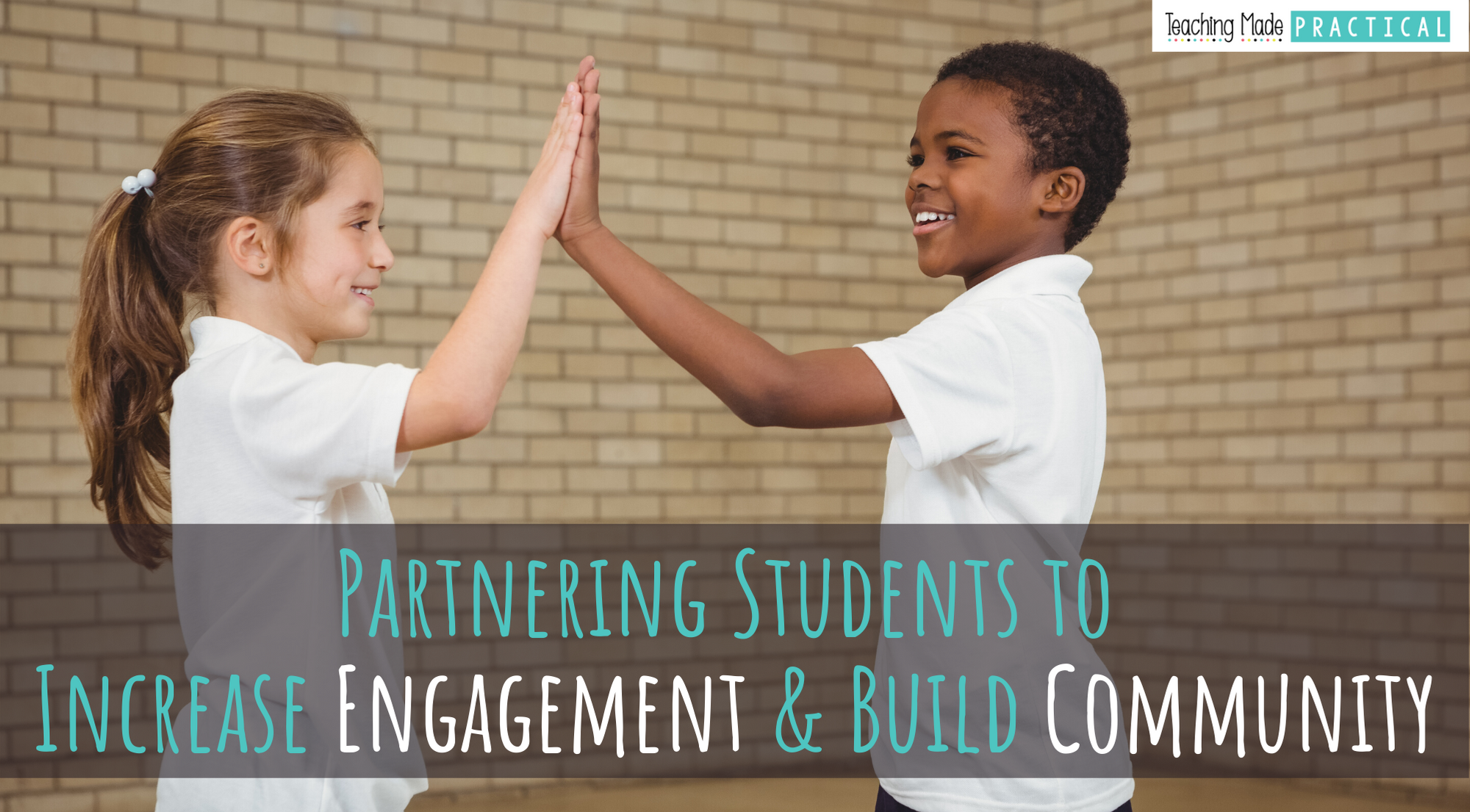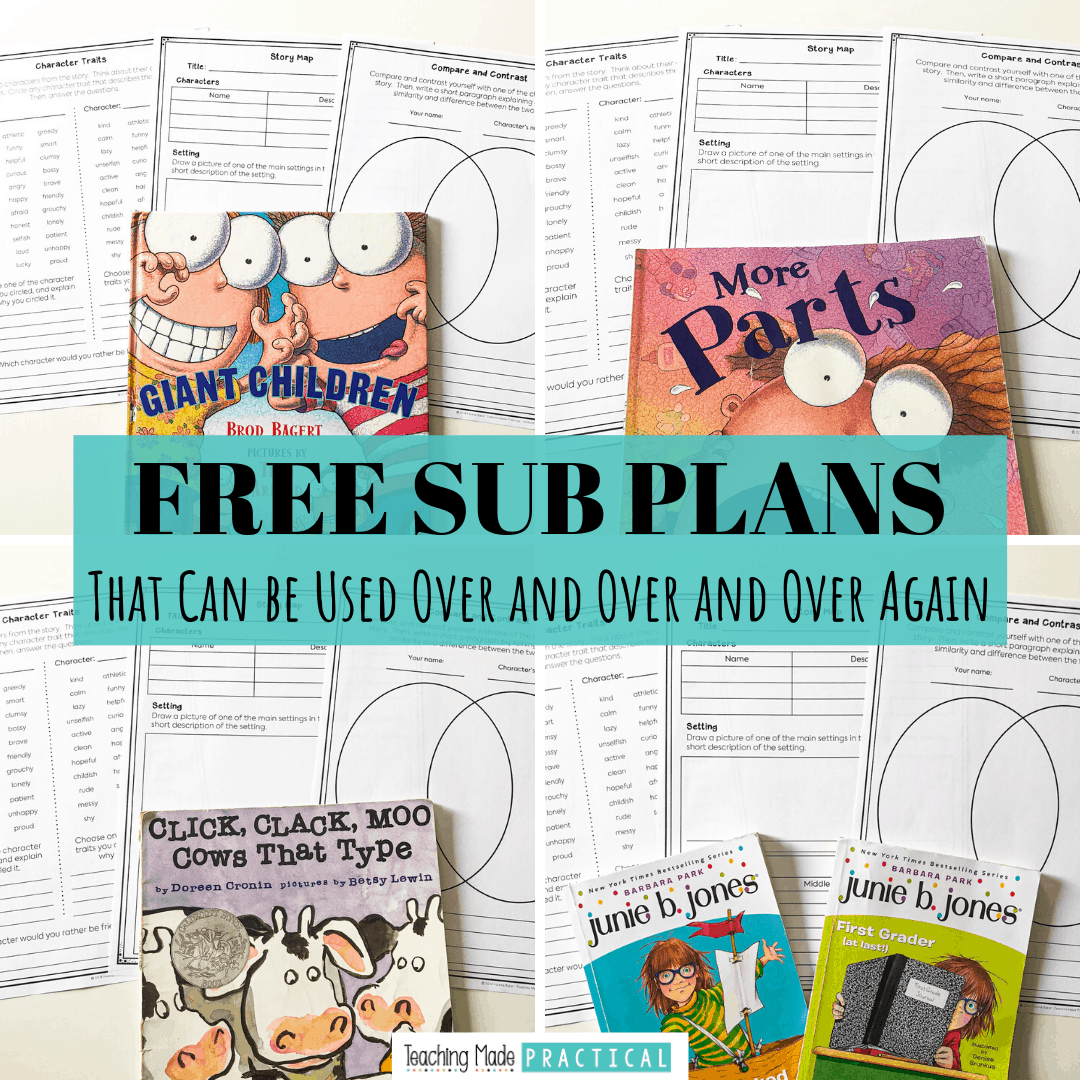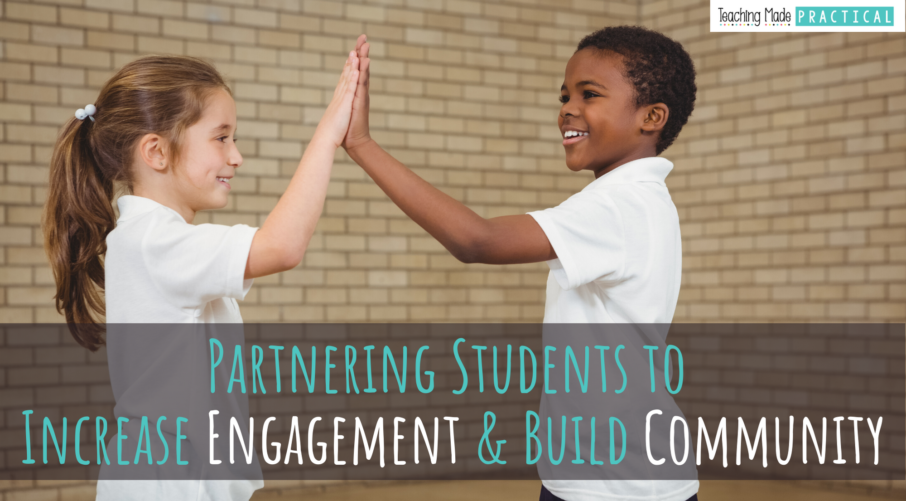
It's a no brainer that when you head back to school, you will teach your students procedures for entering the classroom in the morning, going to the bathroom, and dismissal. But are you teaching students a procedure to pair up and find a partner?
Although there are a lot of fun ways to group students, having a go-to pairing up method helps your classroom run more smoothly and is a good way to impress administration during a surprise observation.
Turn any question into a more engaging activity by partnering students up to answer the question!
An Easy Way to Pair Students Up
My favorite way to partner students up was similar to the Kagan structure of “Stand Up, Hand Up, Pair Up.” Students would walk aimlessly around the classroom, and then pair up with somebody close by on my command.
In my classroom, students followed these steps when partnering up:
- Students were asked to stand up. They knew to stand up, push in their chairs, and wait behind their desk.
- Students were asked to walk. They knew to walk - not run - all around the classroom. They were supposed to walk aimlessly, not simply follow their friends around.
- Students were asked to freeze. They would immediately stop walking and freeze wherever they were.
- Students were asked to pair up. They would find somebody close by to stand next to without talking - no running across the room to be with a friend.
- Anyone who could not find a partner close by would come stand by me. They would either be paired up with someone else, or join a partnership and make a group of 3.
- Students were given a task or asked a question. The partners would complete the task together or each answer the question. (These ice breaker discussion questions are great to help students practice this procedure!). I would walk around and monitor partner conversations.
- Students would return to their desks. When students finished their conversation, they knew they could go back to their desks. Otherwise, I would get their attention with my usual attention getter and give them their next instructions.
Take the classroom outdoors with these fun outdoor scavenger hunts that cover a variety of skills. The 8 scavenger hunts include:
- 5 senses scavenger hunt
- nouns and adjectives hunt
- math review
- living and nonliving
- syllable sort
- ...and more!
Get 8 scavenger hunts for $2.00 and enjoy some sunshine with your students!
Benefits of this Method of Partnering Students Up
Built in Brain Break
One of the biggest benefits with this pairing up technique is that students get to stand up and walk around.
Most elementary teachers would agree that students are expected to sit entirely too much. Pairing students up like this allows for a built in, educational brain break.
Whenever I saw my students getting restless or antsy, I would have them walk around and pair up to answer a question. It’s a short brain break/movement break that doesn’t waste any class time.
You might also like these other brain break ideas.
Increased Engagement
This is a much more effective way to question students. In a traditional setting, where teachers call on one student, only one student responds to a question at a time.
With this method of partnering students, at least 50% of your class should be answering the question at one time - and ideally, the other 50% are listening to their partners.
There is the risk of students answering questions incorrectly and not getting accurate feedback. This can be minimized by walking around and monitoring student conversations.
You can also have follow up conversations whole class once students have returned to their seats to correct any misconceptions.
Speaking and Listening Practice
Speaking and listening standards are often overlooked. This is unfortunate, as most students will end up with jobs that require speaking and listening skills.
This gives students a chance to practice those skills. Plus, sometimes students are able to explain and reach other students in ways that you won't be able to!
Relationship Building
Students will naturally try to partner up with their friends as much as possible. If you use this method regularly, however, they will get a chance to talk with every student in the class consistently. Since I used this method at least 6 or 7 times a day, students were talking to each other constantly.
Having one on one conversations with other students is one of the best ways for students to build relationships with each other. The more students talk to each other and discover how much they have in common, the more students will treat each other with kindness.
These ice breaker and discussion questions are great to sprinkle in throughout the year to help build relationships.
Tips for Using This in Your 3rd, 4th, or 5th Grade Classroom
- Scaffold conversations by providing sentence starters for students to use when talking to their partners and answering whatever question you gave them. (Sentence starters are also helpful for teaching students to write an opinion essay!)
- Observe carefully to see what students might be targets for bullying. If you notice the same student is consistently the last one to be paired up, then they are likely being avoided by other students. Once you know this, you can do something to help.
- Use this to build confidence and risk taking in struggling students. While partners are discussing, help a struggling student answer the question. Then, once everyone has returned to their seats, call on the struggling student to answer the same question you just discussed! Since they have already had a chance to discuss the question with you and a partner, they will be much more confident in answering the question.
Never Stress Over Sub Plans Again!

Make copies, find a fiction book, and you'll be ready for any emergency that comes your way!



Comments 2
Thank you
EL teacher